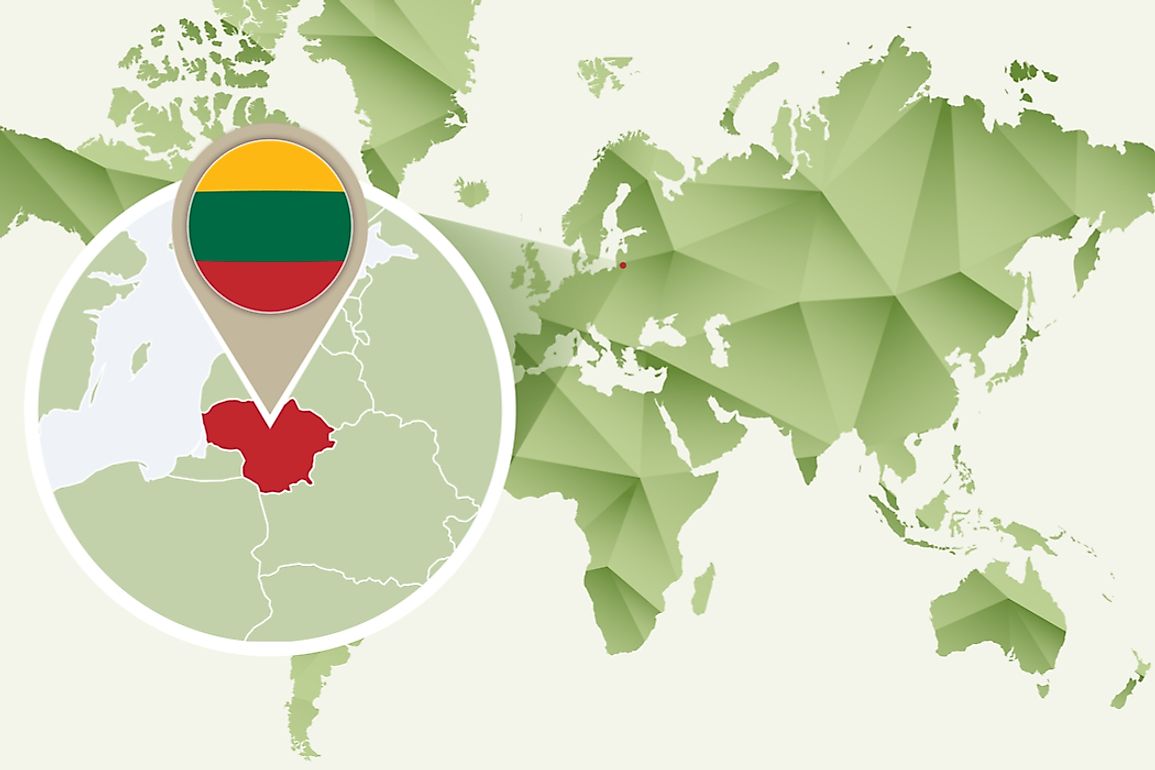What Continent is Lithuania In?

Lithuania which is part of the Baltic countries is found in the northeastern region of the continent of Europe. Officially known as the Republic of Lithuania, it shares its land borders with the nations of Belarus, Kaliningrad Oblast, Latvia, and Poland. With an estimated population of about 2.8 million in 2017, the country covers an area of approximately 25,200 square miles. Vilnius is not only the capital city of Lithuania but also its biggest city. The people of Lithuania are Baltics and Lithuanian is the country’s official language as well as Latvian which happens to be one of the only two living Baltic languages originating from the Indo-European family of languages.
History
For many years, several Baltic tribes occupied the Baltic Sea’s southeastern shores. Following the unification of the Lithuanian lands during the 1230s by the King of Lithuania Mindaugas, the Kingdom of Lithuania was established on July 6, 1253, thus establishing the first unified Lithuanian state. The Grand Duchy of Lithuania became Europe’s largest country during the 14th century; its territories included present-day Belarus, parts of Russia and Poland, Ukraine, and Lithuania. Both Poland and Lithuania formed the Polish-Lithuanian Commonwealth which was a voluntary union between two states under the Lublin Union of 1569. The union lasted over two centuries until it was systematically dismantled by surrounding countries between 1772 and 1795. As a result, the Russian Empire annexed most of the territory of Lithuania. The country’s Act of Independence was signed on February 16, 1918, when the WWI was nearing its end thus establishing the present-day Republic of Lithuania. During the WWII, the country was occupied by the Soviet Union first before Nazi Germany then later occupied again by the Soviet Union after the Germans retreated. Upon declaring its independence from the Soviet Union on March 11, 1990, Lithuania became the Soviet republic to do so thus initiating the restoration of its independence.
Economy
Lithuania has been ranked the world’s 21st country in the Ease of Doing Business Index in 2017. The country also comprises of one of the EU’s fastest-growing economies. The Human Development Index by the UN lists the country as a ‘very high human development’ nation. Lithuania is a full member of NATO, the Eurozone, and the Schengen Agreement. The country is also a member of the Council of Europe and the EU. Lithuania is also part of the Nordic-Baltic Cooperation of the Northern European countries as well as a member of the Nordic Investment Bank.
Culture
There are many Lithuanian typess of literary works written in Latin which was the primary scholarly language during the middle Ages. However, Lithuanian literary works began to be published in the Lithuanian language during the 16th century. There are several museums in the country displaying art and the history of Lithuania, among them is the Lithuanian Art Museum established in the 1933, it is the country’s largest museum of art display and conservation. The Palanga Amber Museum is also another significant museum in the country. Mikalojus Konstantinas, an internationally known musician and composer, is perhaps the most renowned creative in the country’s art community. Since Lithuania experiences a cool and moist climate, its cuisine comprises of products that suit this climate. Dairy products are a specialty in the country among other foods such as mushrooms, rye, barley, beets, berries, potatoes, and greens which are all locally grown. The country’s national and most popular sport is basketball.











